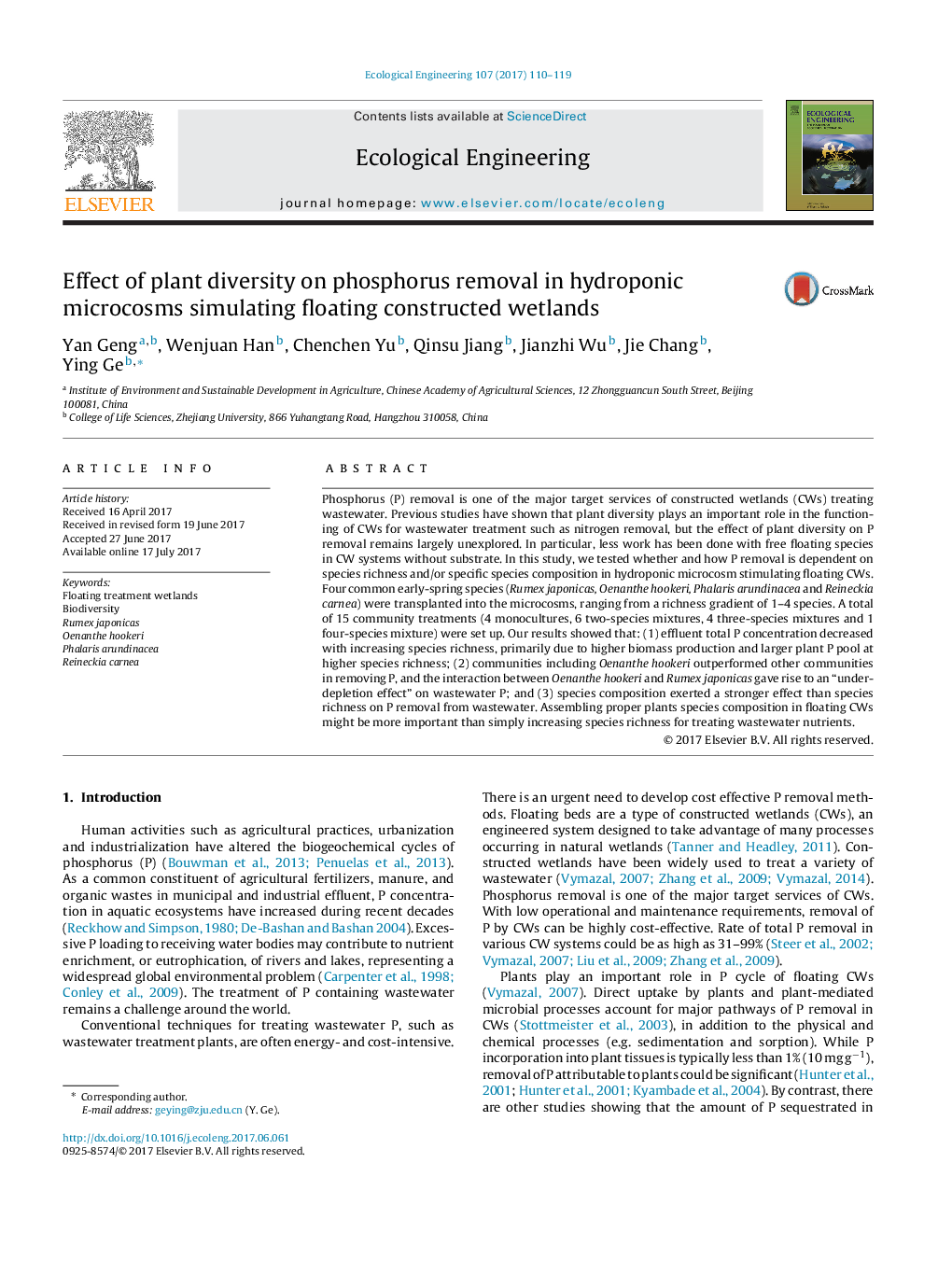| Article ID | Journal | Published Year | Pages | File Type |
|---|---|---|---|---|
| 5743665 | Ecological Engineering | 2017 | 10 Pages |
â¢High plant species richness enhanced P removal in simulated floating CWs.â¢Systems including Oenanthe hookeri outperformed others in removing P.â¢Species composition exerted a stronger effect than species richness on P removal.
Phosphorus (P) removal is one of the major target services of constructed wetlands (CWs) treating wastewater. Previous studies have shown that plant diversity plays an important role in the functioning of CWs for wastewater treatment such as nitrogen removal, but the effect of plant diversity on P removal remains largely unexplored. In particular, less work has been done with free floating species in CW systems without substrate. In this study, we tested whether and how P removal is dependent on species richness and/or specific species composition in hydroponic microcosm stimulating floating CWs. Four common early-spring species (Rumex japonicas, Oenanthe hookeri, Phalaris arundinacea and Reineckia carnea) were transplanted into the microcosms, ranging from a richness gradient of 1-4 species. A total of 15 community treatments (4 monocultures, 6 two-species mixtures, 4 three-species mixtures and 1 four-species mixture) were set up. Our results showed that: (1) effluent total P concentration decreased with increasing species richness, primarily due to higher biomass production and larger plant P pool at higher species richness; (2) communities including Oenanthe hookeri outperformed other communities in removing P, and the interaction between Oenanthe hookeri and Rumex japonicas gave rise to an “under-depletion effect” on wastewater P; and (3) species composition exerted a stronger effect than species richness on P removal from wastewater. Assembling proper plants species composition in floating CWs might be more important than simply increasing species richness for treating wastewater nutrients.
